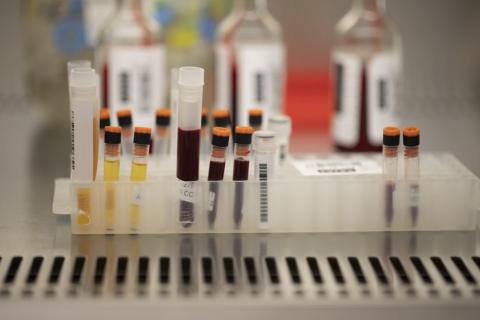Daniel Gibson, Anthony Nolan’s Assistant Director of the Cell and Gene Therapy Service, talks about the importance of where starting materials come from and how the Anthony Nolan Cell and Gene Therapy Services are equipped to help understand and control donor variability.
In November 2018, I wrote an article for Cell and Gene Therapy Insights all about dealing with donor variability. This is a real challenge for the development of cell and gene therapies for a number of reasons.
Dealing with variability
Firstly, we need to understand the variability of the incoming products. By incoming products, I mean the starting cellular material - whether that be a whole blood draw, a Leuko Pak, a mobilised adult stem cell donation or a cord blood unit.
If, for example, the end goal is for an autologous treatment, then does the variability of your starting cells during the development, match that of your patient demographic? If not, your development may fall short of controlling your variability, leading to the production of nonconforming products. Or, if it’s an allogenic target, you’ll need to be sure that the donor profile during the development can be maintained and scaled.
The changing nature of variability
The biggest problem for me is that the variability we are looking for at the beginning of the development is completely different to the variability we will be looking for at the end.
The complexity of identifying characteristics of a cell population that guarantee its function is arguably impossible, simply due to the intricacy and limited knowledge of the mechanism of actions in some cell systems. The development will undoubtedly unveil some new critical parameters that need to be understood and controlled, meaning the donor requirements may well be dynamic.
Getting to know the donor
To date, the Anthony Nolan Cell Therapy Centre has provided nearly 10,000 blood or tissue samples to researchers all over the UK. When I ask where they were getting the material from before working with us, and what did they know about the donor, the answer is usually the same: they either weren’t receiving any material before, or they were getting them from a commercial company with very limited detail of the donor.
There are certain scenarios where not having this information might be OK and the risks associated to donor variability can be minimised, such as for the purpose of process optimisation. But, that’s not always the case and it’s an important factor to consider.
Getting to know your cell provider
When developing a new therapy, it is important for researchers to have a close collaborative relationship with their cell provider, to understand how donors are selected, how this can impact the protocol and to ensure a feedback loop for further developments.
It’s not always possible for the researcher to access the full repertoire of donor information which is why the Cell and Gene therapies services at Anthony Nolan aim to help understand and control the noise associated to donor variability. This can help ensure the products consistently meet specification, through selection and provision of high-quality starting materials.
If you’d like more information about accessing starting materials for research, please get in touch with the Anthony Nolan Cell & Gene Therapy team on CellandGeneTherapies@anthonynolan.org
